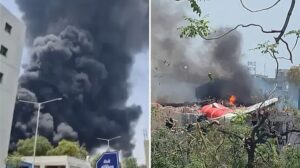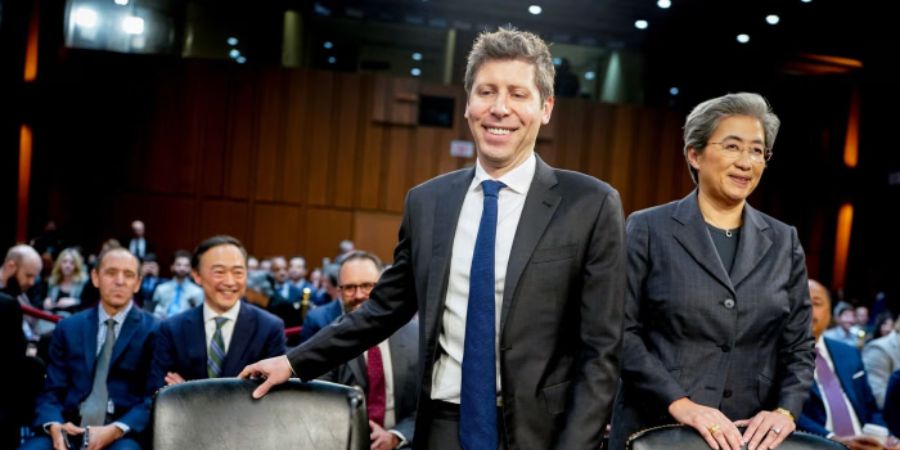
June 12, 2025 is a day most in Ahmedabad will never forget. Air India Flight AI‑171, a Boeing 787‑8 Dreamliner, crashed into a residential area shortly after takeoff, tragically ending the lives of 241 people onboard and dozens more on the ground. Only one passenger survived—a small miracle amid immense sorrow.
In the days since, aviation authorities from India, the U.K., the U.S., and Boeing have launched a meticulous probe. Early findings have raised urgent questions about engine failure, landing gear, flap settings, and even bird strikes. But amid speculation, experts are urging caution—until the black box is analyzed, nothing is certain.
💡 What Aviation Experts Are Noticing
1. Sudden Loss of Thrust
Footage shows AI‑171 struggling to gain altitude, climbing to around 625 feet before descending again. Former NTSB investigator Jeff Guzzetti commented to NPR, “It just appears to me that the airplane is unable to climb,” highlighting how quickly the flight’s momentum was lost.
2. Landing Gear and Flaps
Remarkably, the aircraft appears to have crashed with landing gear still down and flaps not set for a climb. That raised immediate red flags. Experts speculate this could be due to pilot error, or a technical glitch where the crew couldn’t retract them.
3. Engine Failure or Bird Strike?
Aviation professionals are considering multiple technical failures: dual engine shutdown, fuel malfunction, or a bird strike. Ahmedabad is known for bird activity near the runway. However, analysis so far shows no visible signs of external damage, which suggests internal engine or software issues.
4. Pilot Training & Fatigue
Aviation expert Shawn Pruchnicki says the post-pandemic period revealed gaps in pilot training. With rushed retraining and growing air traffic, cockpit crews may be underprepared for rare emergencies like this.
5. Airline Practices & Safety Culture
Former Indian civil aviation official Vibhuti Deora pointed to fleet-age and upkeep concerns when speaking to Reuters. AI‑171 was 11 years old with more than 41,000 flight hours—well within normal usage, but older planes require rigorous and updated maintenance.
⚠️ Why Caution Matters
Experts warn against jumping to conclusions too soon. After all, it typically takes a year or more to fully analyze black box data, lab reports, cockpit recordings, and maintenance logs . Interim theories—like sabotage—are being looked at but aren’t confirmed.
The FAA and NTSB are providing technical help. Boeing has also sent engineers, and GE Aerospace is cooperating. Together, this global team will scrutinize every detail to find out exactly what went wrong.
🧠 Bringing It All Together
Here’s how aviation experts break it down:
- 🔧 Engine or Thrust Issues
- Likely cause behind the sudden stall and inability to climb.
- Referenced by experts from news.com.au, npr.org, theguardian.com, aviationweek.com, and economictimes.indiatimes.com.
- 🛬 Incorrect Gear/Flap Position
- Landing gear may not have retracted and flaps may not have been set correctly.
- Points to possible pilot error or a mechanical failure in the retraction system.
- 🐦 Bird Strike Risk
- Ahmedabad has a known issue with birds near the airport.
- Bird strikes are being considered but no solid evidence has been found yet.
- 🧑✈️ Pilot Training & Fatigue
- Experts raise concerns that post-COVID disruptions may have affected pilot preparedness.
- Emergencies like AI‑171’s require sharp, updated responses.
- 🛠️ Airline Procedures & Maintenance
- AI‑171 was part of an aging fleet, and while still within service norms, older planes need more rigorous care.
- Experts stress the importance of strict maintenance routines and timely upgrades.
🤝 Impact and Forward Steps
- Black Box Analysis: The cockpit voice and flight data recorders—crucial to unraveling the crash—have been found and are being decoded.
- Interim Safety Measures: Many airlines may ground similar Boeing 787s for inspection, especially focusing on engine and flap systems.
- Policy & Protocol Review: Regulators may set stricter pilot retraining schedules and demand that airlines upgrade monitoring systems.
- Public Trust: This crash may shake confidence in Boeing, just as past incidents did. But global cooperation and transparency can help restore it.
✈️ What Lies Ahead
Families are grieving, rescue teams continue recovery efforts in Ahmedabad, and memorials dot the city in memory of those lost. Meanwhile, aviation experts stress the importance of learning lessons—so future risks can be minimized.
In time, the final investigation report will shine a clearer light on the exact chain of events. Until then, experts emphasize a thoughtful, evidence-first approach to avoid misleading theories or panic.
Ultimately, uncovering the truth behind the AI‑171 crash isn’t just technical—it’s deeply human. It’s about accountability, healing, and ensuring safety lessons are learned. With careful investigation and collaboration, the aviation community hopes to prevent such tragedies in the future.
Stay updated, and let’s hope this heartbreak leads to stronger skies.











